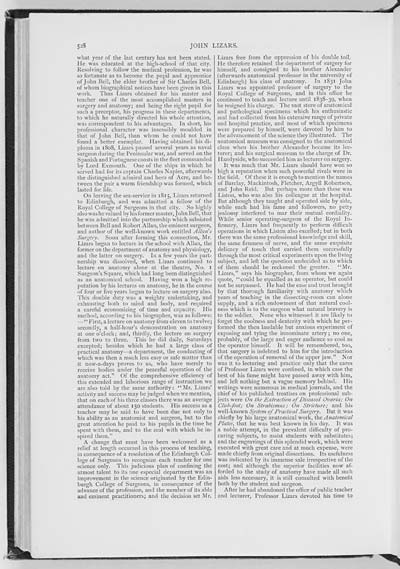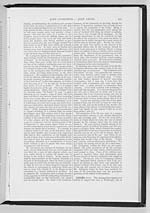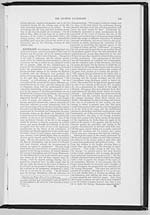528
what year of the last century has not been stated.
He was educated at the high-school of that city.
Resolving to follow the medical profession, he was
so fortunate as to become the pupil and apprentice
of John Bell, the elder brother of Sir Charles Bell,
of whom biographical notices have been given in this
work. Thus Lizars obtained for his master and
teacher one of the most accomplished masters in
surgery and anatomy; and being the right pupil for
such a preceptor, his progress in these departments,
to which he naturally directed his whole attention,
was correspondent to his advantages. In short, his
professional character was insensibly moulded in
that of John Bell, than whom he could not have
found a better exemplar. Having obtained his di-
ploma in 1808, Lizars passed several years as naval
surgeon during the Peninsular war, and served on the
Spanish and Portuguese coasts in the fleet commanded
by Lord Exmouth. One of the ships in which he
served had for its captain Charles Napier, afterwards
the distinguished admiral and hero of Acre, and be-
tween the pair a warm friendship was formed, which
lasted for life.
On leaving the sea-service in 1815, Lizars returned
to Edinburgh, and was admitted a fellow of the
Royal College of Surgeons in that city. So highly
also was he valued by his former master, John Bell, that
he was admitted into the partnership which subsisted
between Bell and Robert Allan, the eminent surgeon,
and author of the well-known work entitled Allan's
Surgery. Soon after forming this connection, Mr.
Lizars began to lecture in the school with Allan, the
former on the department of anatomy and physiology,
and the latter on surgery. In a few years the part-
nership was dissolved, when Lizars continued to
lecture on anatomy alone at the theatre, No. I
Surgeon's Square, which had long been distinguished
as an anatomical school. Having won a high re-
putation by his lectures on anatomy, he in the course
of four or five years began to lecture on surgery also.
This double duty was a weighty undertaking, and
exhausting both to mind and body, and required
a careful economizing of time and capacity. His
method, according to his biographer, was as follows:
� "First, a lecture on anatomy from eleven to twelve;
secondly, a half-hour's demonstration on anatomy
at one o'clock; and, thirdly, the lecture on surgery
from two to three. This he did daily, Saturdays
excepted; besides which he had a large class of
practical anatomy�a department, the conducting of
which was then a much less easy or safe matter than
it now-a-days proves to us, who have merely to
receive bodies under the peaceful operation of the
anatomy act." Of the comprehensive efficiency of
this extended and laborious range of instruction we
are also told by the same authority: '' Mr. Lizars'
activity and success may be judged when we mention,
that on each of his three classes there was an average
attendance of about 150 students. His success as a
teacher may be said to have been due not only to
his ability as an anatomist and surgeon, but to the
great attention he paid to his pupils in the time he
spent with them, and to the zeal with which he in-
spired them."
A change that must have been welcomed as a
relief at length occurred in this process of teaching,
in consequence of a resolution of the Edinburgh Col-
lege of Surgeons to recognize each teacher for one
science only. This judicious plan of confining the
utmost talent to its one especial department was an
improvement in the science originated by the Edin-
burgh College of Surgeons, in consequence of the
advance of the profession, and the number of its able
and eminent practitioners; and the decision set Mr.
Lizars free from the oppression of his double toil.
He therefore retained the department of surgery for
himself, and consigned to his brother Alexander
(afterwards anatomical professor in the university of
Edinburgh) his class of anatomy. In 1831 John
Lizars was appointed professor of surgery to the
Royal College of Surgeons, and in this office he
continued to teach and lecture until 1838-39, when
he resigned his charge. The vast store of anatomical
and pathological specimens which his enthusiastic
zeal had collected from his extensive range of private
and hospital practice, and most of which specimens
were prepared by himself, were devoted by him to
the advancement of the science they illustrated. The
anatomical museum was consigned to the anatomical
class when his brother Alexander became its lec-
turer; and his surgical museum to the charge of Dr.
Handyside, who succeeded him as lecturer on surgery.
It was much that Mr. Lizars should have won so
high a reputation when such powerful rivals were in
the field. Of these it is enough to mention the names
of Barclay, Mackintosh, Fletcher, Argyll Robertson,
and John Reid. But perhaps more than these was
Liston, who was also his colleague at the hospital.
But although they taught and operated side by side,
while each had his fame and followers, no petty
jealousy interfered to mar their mutual cordiality.
While senior operating-surgeon of the Royal In-
firmary, Lizars had frequently to perform difficult
operations in which Liston also excelled; but in both
there was the same professional knowledge and skill,
the same firmness of nerve, and the same exquisite
delicacy of touch that carried them successfully
through the most critical experiments upon the living
subject, and left the question undecided as to which
of them should be reckoned the greater. "Mr.
Lizars," says his biographer, from whom we again
quote, "could be equalled as an operator, but could
not be surpassed. He had the ease and trust brought
by that thorough familiarity with anatomy which
years of teaching in the dissecting-room can alone
supply, and a rich endowment of that natural cool-
ness which is to the surgeon what natural bravery is
to the soldier. None who witnessed it are likely to
forget the coolness and dexterity with which he per-
formed the then laudable but anxious experiment of
exposing and tying the innominate artery; no one,
probably, of the large and eager audience so cool as
the operator himself. It will be remembered, too,
that surgery is indebted to him for the introduction
of the operation of removal of the upper jaw." Nor
was it to lecturing and practice only that the cares
of Professor Lizars were confined, in which case the
best of his fame might have passed away with him,
and left nothing but a vague memory behind. His
writings were numerous in medical journals, and the
chief of his published treatises on professional sub-
jects were On the Extraction of Diseased Ovaria; On
Club-foot; On Strabismus; On Stricture; and his
well-known System of Practical Surgery. But it was
chiefly by his large anatomical work, the Anatomical
Plates, that he was best known in his day. It was
a noble attempt, in the prevalent difficulty of pro-
curing subjects, to assist students with substitutes;
and the engravings of this splendid work, which were
executed with great care and at much expense, were
made chiefly from original dissections. Its usefulness
was indicated by its immense sale irrespective of the
cost; and although the superior facilities now af-
forded to the study of anatomy have made all such
aids less necessary, it is still consulted with benefit
both by the student and surgeon.
After he had abandoned the office of public teacher
and lecturer, Professor Lizars devoted his time to

![]() Universal Viewer |
Universal Viewer | ![]() Mirador |
Large image | Transcription
Mirador |
Large image | Transcription
![]()

